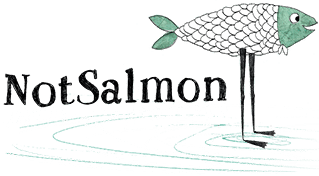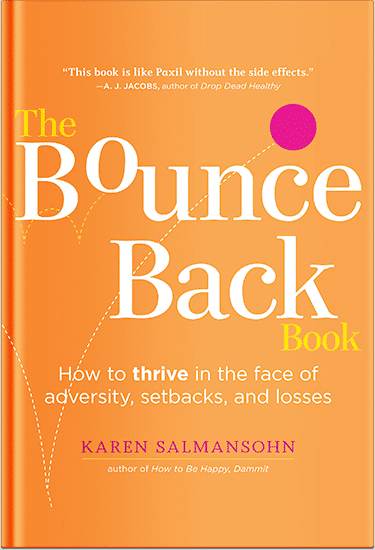 Language barriers represent one of the most persistent challenges in professional environments today. In healthcare facilities, emergency rooms handle patients speaking dozens of different languages every single day.
Language barriers represent one of the most persistent challenges in professional environments today. In healthcare facilities, emergency rooms handle patients speaking dozens of different languages every single day.
Legal firms navigate international contracts where a single mistranslation can trigger years of litigation. Corporate boardrooms host virtual meetings connecting teams across continents, each participant bringing their native language to the conversation.
The cost of miscommunication isn’t abstract. Medical errors linked to language barriers affect patient outcomes measurably. Legal disputes arising from translation mistakes run into millions of dollars. Business deals collapse when nuances get lost between languages. Yet many organizations still rely on outdated interpretation methods that can’t keep pace with the speed of modern professional communication.
Real-time language interpretation has evolved beyond simple word-for-word conversion. Today’s technology processes context, industry terminology, and cultural nuances simultaneously—capabilities that transform how professionals work across linguistic boundaries.
Understanding Live Translation in Professional Contexts
Live translation isn’t the same as simply running text through a translation app. It involves converting spoken language into another language in real time, allowing people to communicate naturally during conversations, meetings, or consultations. This technology has evolved dramatically over the past decade, moving from clunky, error-prone systems to sophisticated solutions that can handle nuanced conversations.
What Makes Industry-Specific Translation Different
Not all translation needs are created equal. Translating a casual conversation differs vastly from interpreting medical symptoms or legal terminology. Industry-specific translation requires specialized vocabulary, cultural understanding, and often regulatory compliance. A mistranslation in healthcare could lead to incorrect treatment. In legal settings, it might invalidate a contract. The margin for error is razor-thin.
The Technology Behind Real-Time Language Interpretation
Modern simultaneous translation technology combines artificial intelligence, natural language processing, and vast linguistic databases. These systems analyze speech patterns, context, and domain-specific terminology to deliver accurate translations within seconds. Some platforms integrate directly with video conferencing tools, making live translation, like JotMe, accessible during virtual meetings without requiring separate software.
Live Translation in Healthcare Settings
Healthcare faces unique communication challenges. Patients need to describe symptoms accurately, understand diagnoses, and follow treatment instructions. When language barriers exist, every step becomes complicated.
Critical Scenarios Requiring Medical Translation Accuracy
Emergency situations demand immediate, precise communication. A patient’s description of allergies, current medications, or symptom duration can’t wait for a human interpreter to arrive. Medical translation accuracy becomes critical during consultations, surgical consent procedures, and discharge instructions. Research shows that patients with limited English proficiency experience higher rates of medical errors when adequate interpretation isn’t available.
Healthcare Language Barriers and Patient Safety
Studies indicate that communication failures contribute to a significant percentage of adverse medical events. When patients can’t articulate their symptoms or understand their care plans, treatment compliance drops. Healthcare language barriers don’t just affect individual patients—they create systemic inequities in health outcomes across linguistic communities.
Regulatory Compliance and HIPAA Considerations
Healthcare providers must navigate strict privacy regulations while providing interpretation services. Professional translation solutions need to maintain HIPAA compliance, ensuring that patient information remains confidential during translation. This adds another layer of complexity to selecting and implementing translation technology in medical environments.
Challenges in Medical Terminology Translation
Medical vocabulary presents unique difficulties. Terms often lack direct equivalents in other languages, and anatomical descriptions vary culturally. A system might accurately translate common phrases but struggle with specialized terminology like “myocardial infarction” or “thrombocytopenia.” For multilingual teams working across different regions, features that translate English to Japanese or other language pairs need to handle these technical terms reliably.
Live Translation Services in Legal Environments
The legal field operates on precision. A single mistranslated word in a contract can create ambiguity that costs millions in litigation. Legal interpreter services must meet exacting standards.
Court Proceedings and Legal Interpreter Services
Courtrooms require certified interpreters who understand legal procedures and terminology. While technology assists in some settings, high-stakes proceedings often still require human interpreters working alongside technological tools. The challenge lies in maintaining accuracy while preserving the nuance of witness testimony and legal arguments.
Contract Negotiations and International Law
International business deals involve complex negotiations where parties must understand not just words but intentions and implications. Contract language contains specific legal meanings that don’t always translate directly. Professional translation solutions must capture these subtleties while maintaining legal validity across jurisdictions.
Accuracy Requirements in Legal Translation
Legal translation tolerates virtually no margin for error. Ambiguity that might be acceptable in casual conversation becomes dangerous in contracts, patents, or compliance documents. Systems must achieve near-perfect accuracy, which often means combining AI technology with human review.
Confidentiality and Security Protocols
Legal matters demand absolute confidentiality. Translation platforms used in legal contexts must employ end-to-end encryption and comply with attorney-client privilege protections. Many firms require on-premise solutions or strictly controlled cloud environments to maintain security.
Live Translation for Corporate and Business Applications
Global businesses operate across time zones, cultures, and languages daily. Effective multilingual business communication isn’t optional—it’s essential for survival in international markets.
Multilingual Business Communication in Global Companies
Companies with international teams conduct countless meetings where participants speak different native languages. Translation for international meetings enables real-time collaboration without the delays of sequential interpretation. Employees can participate fully regardless of their language proficiency, fostering more inclusive work environments.
Cross-Border Negotiations and Client Relationships
Building relationships with international clients requires understanding cultural nuances alongside language. Business negotiations involve reading between the lines, understanding tone, and building rapport. Technology like Google Meet translation features integrated into video platforms helps facilitate these connections by removing language as a barrier to relationship-building.
Training and Onboarding Multilingual Teams
Companies increasingly hire talent globally, creating diverse teams that don’t share a common language. Training materials, onboarding sessions, and ongoing professional development all require translation support. Live translation enables real-time training delivery across language groups simultaneously.
Comparing Professional Translation Solutions Across Industries
Different sectors have vastly different needs when it comes to translation technology.
Accuracy and Terminology Requirements by Sector
Healthcare demands medical terminology precision. Legal work requires exact legal language. Corporate environments often prioritize speed and natural conversation flow. Understanding these distinctions helps organizations select appropriate solutions rather than one-size-fits-all approaches.
Simultaneous Translation Technology Limitations
Current technology, while impressive, still has boundaries. Idiomatic expressions, heavy accents, and rapid speech can challenge even advanced systems. Background noise in busy environments affects accuracy. Cultural references don’t always translate meaningfully, even when words convert correctly.
Cost Considerations for Industry-Specific Translation
Investment in translation technology varies significantly. Healthcare systems might spend more for HIPAA-compliant solutions. Law firms might pay premium rates for guaranteed confidentiality. Businesses might prioritize scalability and integration with existing tools. Understanding total cost of ownership—including training, maintenance, and accuracy verification—matters more than initial purchase price.
Best Practices for Implementing Live Translation Services
Successfully deploying translation technology requires more than purchasing software.
Selecting the Right Technology for Your Industry
Start by identifying specific use cases. Does your organization need translation for meetings, documentation, or both? What languages do you work with most frequently? Does your industry have regulatory requirements? Answering these questions narrows the field considerably.
Training Staff to Work with Translation Systems
Even excellent technology fails without proper user training. Staff need to understand how to speak clearly for optimal translation, how to verify accuracy, and when to escalate to human interpreters. Creating protocols for technology use ensures consistency across your organization.
Quality Assurance and Monitoring Translation Accuracy
Regular accuracy audits help maintain translation quality. This might involve spot-checking translations, gathering user feedback, or comparing automated translations against human interpreter results. Continuous monitoring allows you to identify patterns in errors and address them systematically.
How Can Live Translation Transform Your Industry’s Communication?
The question isn’t whether your industry needs better cross-language communication—it’s how quickly you can implement solutions that break down language barriers. Whether you’re ensuring patient safety in healthcare, protecting client interests in legal work, or expanding business internationally, translation technology offers tangible benefits.
Start by assessing your current language-related challenges. Where do communication breakdowns occur? What’s the cost—in time, money, or risk—of those failures? Then explore solutions designed for your specific industry needs. The technology exists to solve these problems. The real challenge is recognizing the opportunity and taking action to implement it effectively.
P.S. Before you zip off to your next Internet pit stop, check out these 2 game changers below - that could dramatically upscale your life.
1. Check Out My Book On Enjoying A Well-Lived Life: It’s called "Your To Die For Life: How to Maximize Joy and Minimize Regret Before Your Time Runs Out." Think of it as your life’s manual to cranking up the volume on joy, meaning, and connection. Learn more here.
2. Life Review Therapy - What if you could get a clear picture of where you are versus where you want to be, and find out exactly why you’re not there yet? That’s what Life Review Therapy is all about.. If you’re serious about transforming your life, let’s talk. Learn more HERE.
Think happier. Think calmer.
Think about subscribing for free weekly tools here.
No SPAM, ever! Read the Privacy Policy for more information.
One last step!
Please go to your inbox and click the confirmation link we just emailed you so you can start to get your free weekly NotSalmon Happiness Tools! Plus, you’ll immediately receive a chunklette of Karen’s bestselling Bounce Back Book!


 Language barriers represent one of the most persistent challenges in professional environments today. In healthcare facilities, emergency rooms handle patients speaking dozens of different languages every single day.
Language barriers represent one of the most persistent challenges in professional environments today. In healthcare facilities, emergency rooms handle patients speaking dozens of different languages every single day. 